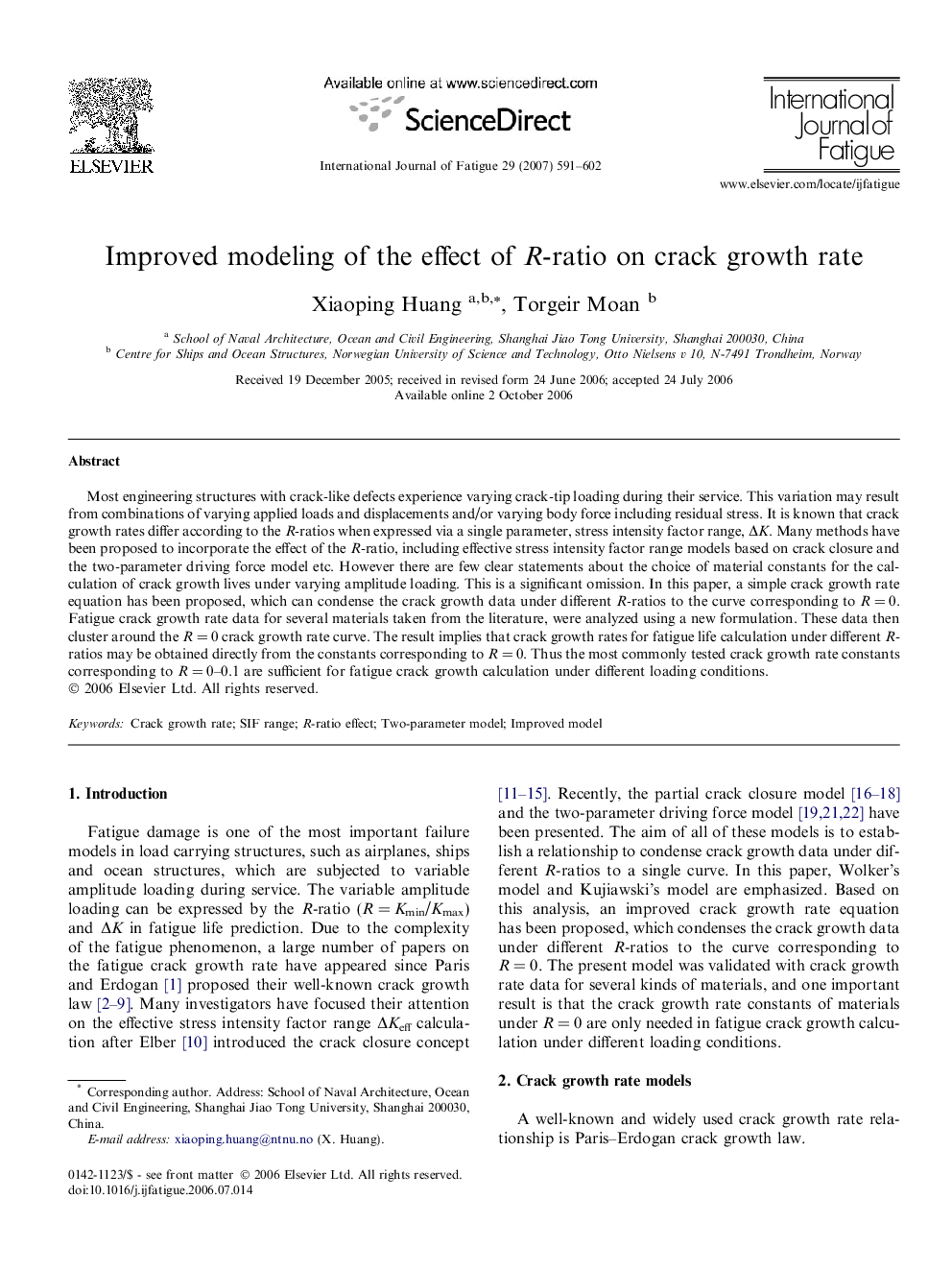| Article ID | Journal | Published Year | Pages | File Type |
|---|---|---|---|---|
| 777321 | International Journal of Fatigue | 2007 | 12 Pages |
Most engineering structures with crack-like defects experience varying crack-tip loading during their service. This variation may result from combinations of varying applied loads and displacements and/or varying body force including residual stress. It is known that crack growth rates differ according to the R-ratios when expressed via a single parameter, stress intensity factor range, ΔK. Many methods have been proposed to incorporate the effect of the R-ratio, including effective stress intensity factor range models based on crack closure and the two-parameter driving force model etc. However there are few clear statements about the choice of material constants for the calculation of crack growth lives under varying amplitude loading. This is a significant omission. In this paper, a simple crack growth rate equation has been proposed, which can condense the crack growth data under different R-ratios to the curve corresponding to R = 0. Fatigue crack growth rate data for several materials taken from the literature, were analyzed using a new formulation. These data then cluster around the R = 0 crack growth rate curve. The result implies that crack growth rates for fatigue life calculation under different R-ratios may be obtained directly from the constants corresponding to R = 0. Thus the most commonly tested crack growth rate constants corresponding to R = 0–0.1 are sufficient for fatigue crack growth calculation under different loading conditions.
